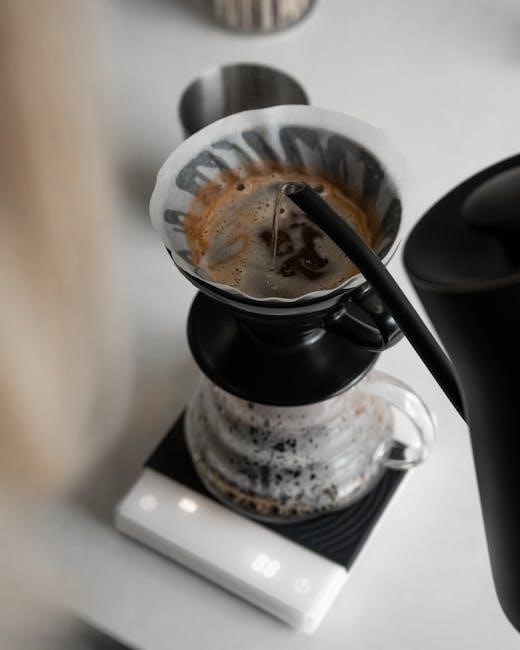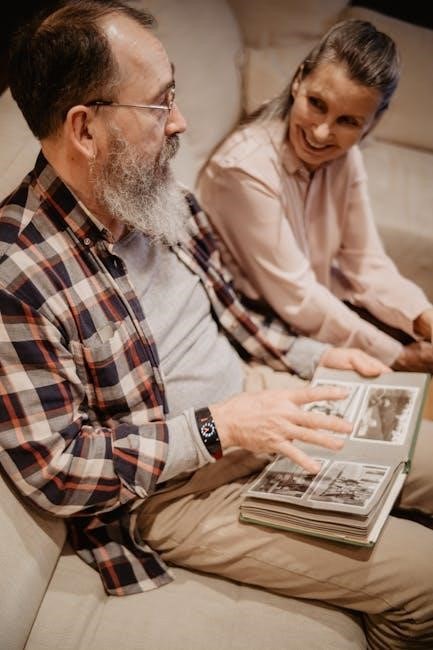vas scale pdf
The Visual Analog Scale (VAS) is a widely used measurement tool in healthcare and research, enabling continuous assessment of subjective experiences like pain, quality of life, and mental health.
1.1 Definition and Purpose
The Visual Analog Scale (VAS) is a simple, unidimensional measurement tool used to assess subjective phenomena such as pain, quality of life, or mental health. It consists of a continuous scale, typically ranging from 0 to 100, where participants mark their experience. The VAS is versatile, allowing individuals to quantify feelings that are difficult to measure objectively. Its primary purpose is to provide a reliable and sensitive method for monitoring changes over time, enabling comparisons between groups or evaluating treatment effectiveness in clinical and research settings.
1.2 Historical Background

The Visual Analog Scale (VAS) has its roots in early 20th-century psychology, evolving as a tool to measure subjective experiences. Initially used in pain assessment, it gained popularity in the 1960s for its simplicity and sensitivity. The scale’s continuous nature allowed for finer distinctions compared to categorical scales. Over time, its application expanded to quality of life, mental health, and other domains. Recent studies, such as a 2023 publication by Henry Haapiainen, validate its effectiveness in prostatectomy outcomes, demonstrating its enduring relevance in modern healthcare research.
1.3 Importance in Healthcare and Research
The Visual Analog Scale (VAS) is a cornerstone in healthcare and research for assessing subjective phenomena like pain, quality of life, and mental health. Its ability to capture nuanced, continuous data makes it invaluable for tracking patient progress and comparing outcomes across studies. Widely used in clinical trials and practice, the VAS provides reliable, sensitive measurements, enabling precise evaluations of treatment efficacy. Its simplicity and adaptability to digital formats further enhance its utility in modern healthcare, as seen in studies on prostatectomy, psoriatic arthritis, and dementia care.

What is the VAS Scale?
The Visual Analog Scale (VAS) is a continuous measurement tool ranging from 0 to 100, used to assess subjective experiences like pain, quality of life, and mental health.
2.1 Structure and Design
The VAS scale is a continuous, unidimensional measurement tool typically represented as a 10-centimeter horizontal or vertical line. It ranges from 0 to 100, with 0 indicating the absence of a symptom (e.g., “no pain”) and 100 representing the maximum intensity (e.g., “worst pain imaginable”). The design is simple, with clear endpoints and no intermediate labels, allowing respondents to mark their perception at any point along the line. This structure enables precise measurement using a ruler, making it highly sensitive to subtle changes in symptoms or conditions.
2.2 How to Use the VAS Scale
The VAS scale is a self-reported tool where respondents mark their perceived intensity on a continuous line. For pain assessment, the scale ranges from 0 (“no pain”) to 100 (“worst pain imaginable”). Patients place a vertical line at the point reflecting their current state. Measurements are taken in millimeters from the “no pain” endpoint, providing a precise numerical score. The scale is simple to administer, with clear instructions, and can be used in both paper-based and digital formats, making it versatile for various clinical and research settings.
2.3 Common Applications
The VAS scale is widely applied in pain measurement, quality of life assessments, and mental health evaluations. It is commonly used to assess pain intensity, with scores ranging from 0 to 100. In healthcare, it measures patient outcomes, such as post-surgery recovery or chronic pain management. Additionally, it is used in clinical trials to evaluate treatment effectiveness. The scale is also applied in mental health to gauge symptoms like anxiety or depression. Its versatility makes it a valuable tool across various medical and research settings, providing insights into patient experiences and treatment responses.

Applications of the VAS Scale
The VAS scale is primarily used to measure pain intensity, assess quality of life, and evaluate mental health symptoms. It is also applied in various medical fields.
3.1 Pain Measurement
The VAS scale is widely used to assess pain intensity, with patients rating their pain from 0 (no pain) to 100 (worst pain). It is applied in both clinical and research settings to monitor pain progression and treatment effectiveness. Studies, such as one conducted at Seinäjoki Central Hospital, utilized a 0-100 VAS to evaluate post-prostatectomy pain over seven days. The scale’s simplicity allows for quick data collection, making it a valuable tool in postoperative recovery and chronic pain management. Its versatility enables comparison across different patient groups and care settings.
3.2 Quality of Life Assessments
The VAS scale is a valuable tool for assessing health-related quality of life (HRQoL), providing a single-index measure of patient well-being. It is often used in clinical trials to evaluate treatment outcomes and patient-reported outcomes. For instance, in dementia care, VAS helps measure self-reported quality of life in patients, offering insights into their emotional and functional well-being. Its simplicity allows for easy integration into larger assessment frameworks, making it a reliable method for tracking changes in patient quality of life over time in various clinical and research settings.
3.3 Mental Health Evaluations
The VAS scale is increasingly used in mental health evaluations to assess symptom severity and treatment outcomes. It provides a continuous measure of subjective experiences, such as anxiety or depression levels. For instance, the VAS has been compared to the Liebowitz Social Anxiety Scale (LSAS), offering a simpler and quicker alternative for patients. Its ease of use reduces patient burden, making it ideal for repeated assessments. This tool is particularly valuable in tracking changes in mental health symptoms over time, enhancing both clinical practice and research in psychiatry and psychology.
3.4 Other Medical Uses
The VAS scale is versatile, extending beyond pain and mental health to various medical applications. It is used to evaluate functional outcomes after prostatectomy, assessing recovery and patient satisfaction. In psoriatic arthritis, VAS measures disease activity and treatment response. Additionally, it aids in dementia care, helping quantify quality of life and caregiver burden. The scale is also applied in spinal cord stimulation outcomes and headache studies, demonstrating its broad utility in clinical research and practice. Its simplicity makes it a valuable tool across diverse medical specialties, enhancing data collection and patient care.
Advantages of the VAS Scale
The VAS scale offers simplicity, ease of use, and high sensitivity to change, making it an effective tool for assessing various medical conditions and treatment responses.
4.1 Simplicity and Ease of Use
The VAS scale is renowned for its straightforward design, requiring minimal instruction. Patients mark a continuous line between two extremes, such as no pain to worst pain, making it intuitive. This simplicity ensures quick administration and reduces respondent burden. Its ease of use is particularly beneficial in clinical settings, allowing for efficient data collection. The unidimensional nature of the VAS focuses on a single aspect, enhancing clarity and reducing confusion. This makes it accessible for diverse populations, including those with limited literacy or cognitive impairments.
4.2 High Sensitivity to Change
The VAS scale is highly sensitive to change, making it an effective tool for monitoring subtle variations in patient conditions. Its continuous nature allows for precise measurement of small changes in pain, quality of life, or mental health. This sensitivity is particularly valuable in clinical trials and longitudinal studies, where detecting even minor improvements or deteriorations is crucial. The scale’s ability to capture nuanced changes ensures accurate tracking of treatment responses and patient progress over time, enhancing its reliability in both research and clinical practice.
Limitations of the VAS Scale
The VAS scale’s subjectivity and lack of standardization can lead to variability in responses, affecting reliability. Its unidimensional nature may not capture complex conditions fully, limiting depth in assessments.
5.1 Subjectivity and Variability
The VAS scale is inherently subjective, as responses rely on individual perceptions, leading to variability. Patients may interpret the scale differently, and factors like mood or context can influence ratings. Digital and paper-based formats may yield inconsistent results due to differences in scale length and visual presentation. Additionally, the lack of standardized descriptors for each point on the scale can result in diverse interpretations, further complicating data comparability. This subjectivity limits the tool’s reliability in cross-study comparisons and longitudinal assessments, despite its simplicity and sensitivity to change.
5.2 Lack of Standardization
The VAS scale lacks standardized design and administration, leading to variability in application. Scale lengths differ (e.g., 10-cm vs. 28.9-cm vs. 9.6-cm), and formats vary between paper-based, laptop, and mobile versions. This inconsistency affects data comparability, as patients may interpret scale lengths differently. Additionally, the absence of uniform descriptors for each point on the scale further complicates standardization. Without consistent guidelines, the VAS scale’s effectiveness in cross-study comparisons and longitudinal research is limited, despite its widespread use in healthcare and research settings.
Comparisons with Other Scales
The VAS scale is often compared to Likert and Faces Pain Scales, differing in design and response range, offering unique advantages in measuring subjective experiences like pain and health-related quality of life.
6.1 VAS vs. Likert Scale
The VAS and Likert scale differ in structure and application. The VAS is a continuous scale (0-100) for subjective measures like pain, while the Likert scale uses discrete categories (e.g., 1-5). The VAS offers higher sensitivity to change, making it ideal for research, but its subjectivity can lead to variability. In contrast, the Likert scale is simpler and more straightforward, though less precise. Both are widely used, with choice depending on the context and desired granularity of data.
6.2 VAS vs. Faces Pain Scale
The Faces Pain Scale (FPS) and VAS differ in design and application. The FPS uses facial expressions (e.g., smiling to distressed) to represent pain levels, making it intuitive for children or those with limited literacy. It is categorical, with fixed points, while the VAS is a continuous 0-100 scale, offering greater sensitivity to change. The VAS is more subjective, requiring patients to interpret a visual analog, whereas the FPS provides concrete references. Both are effective but suited for different populations and contexts, with the FPS being more accessible and the VAS more precise for research purposes.

Digital vs. Traditional VAS
Digital VAS offers enhanced precision and efficiency compared to traditional paper-based methods, enabling real-time data capture and analysis, while maintaining the core principles of the analog scale.

7.1 Paper-Based VAS
The traditional paper-based VAS is a simple, widely used tool for assessing subjective measures like pain and quality of life. It typically features a 10-cm line with anchored extremes, such as “no pain” to “worst pain.” Patients mark their perceived intensity, and the distance from the zero point is measured in millimeters. This method is easy to administer and requires minimal resources, making it accessible in clinical and research settings. Studies, such as those on prostatectomy outcomes, have utilized paper-based VAS to collect data effectively, ensuring reliable and consistent results.
7.2 Digital and Mobile-Based VAS
Digital and mobile-based VAS systems offer modern alternatives to traditional paper-based methods. These platforms use electronic devices, such as laptops or smartphones, to administer the scale. For instance, studies have employed laptop-based (e.g., Thinkpad) and mobile phone-based (e.g., iPhone 6) VAS tools, allowing patients to record their pain levels online. Digital VAS enhances data accuracy, enables real-time tracking, and simplifies storage. This approach is particularly useful for longitudinal studies, as it facilitates consistent follow-up and remote data collection, improving patient convenience and research efficiency.

Legal and Ethical Considerations
Patient consent and privacy are crucial when using VAS, ensuring data protection. Copyright and usage rights must also be respected, adhering to legal standards for ethical practice.
8.1 Patient Consent and Privacy
Patient consent is essential when using the VAS scale, ensuring individuals understand its purpose and how their data will be used. Privacy must be maintained, with all data anonymized to protect identities. Researchers and clinicians must comply with regulations like GDPR and HIPAA to safeguard sensitive information. Clear communication about the study’s goals and data security measures is crucial to build trust. Consent forms should be accessible and understandable, allowing patients to make informed decisions. Proper handling of VAS data ensures ethical practices and respects patient autonomy.
8.2 Copyright and Usage Rights
The VAS scale is widely used, but its distribution and use may be subject to copyright laws. Many versions are available under Creative Commons licenses, allowing free use with proper citation. However, specific adaptations or digital tools may require permission from the original authors or institutions. Users must ensure they comply with copyright terms and conditions before reproducing or modifying the scale. Proper attribution and adherence to licensing agreements are essential to avoid legal issues and maintain ethical standards in research and clinical applications.

Case Studies and Research Examples
Studies using VAS include prostatectomy outcomes, psoriatic arthritis, and dementia care, demonstrating its effectiveness in evaluating pain, disease activity, and quality of life across diverse conditions.
9.1 VAS in Prostatectomy Outcomes

A study involving 200 men undergoing 3D laparoscopic prostatectomy used VAS to assess post-surgical pain and recovery. Patients recorded pain levels on a 0-100 scale via traditional paper-based VAS and digital platforms, including laptops and mobile phones. The study compared pain scores across different methods, demonstrating the VAS’s effectiveness in evaluating functional outcomes. Results showed high sensitivity and consistency in measuring pain intensity, making VAS a reliable tool for assessing prostatectomy recovery and patient well-being in clinical settings.

9.2 VAS in Psoriatic Arthritis
The Visual Analog Scale (VAS) is widely used to assess disease severity in psoriatic arthritis (PsA), a condition characterized by musculoskeletal and skin manifestations. Physicians use VAS to evaluate joint inflammation and skin symptoms, while patients report their pain and functional limitations. This dual assessment helps monitor disease progression and treatment response. Studies highlight the VAS’s role in capturing symptom variability, enabling tailored therapies and improving patient outcomes in PsA management.
9.3 VAS in Dementia Care
The Visual Analog Scale (VAS) is increasingly used in dementia care to assess quality of life and patient-reported outcomes. People with dementia (PWD) often struggle to articulate their experiences, making VAS a valuable tool for capturing their perspectives. Speech-language pathologists use VAS to evaluate communication and emotional well-being. Its simplicity and visual nature make it accessible for PWD, providing insights into their daily experiences and care needs. This tool aids in tailoring interventions and improving the overall quality of care for individuals with dementia.
Future Directions for VAS
The future of VAS lies in technological advancements, with digital platforms enhancing accessibility and data collection. Expanded applications in healthcare and research are anticipated, improving patient outcomes.
10.1 Technological Advancements
Technological advancements are revolutionizing the Visual Analog Scale (VAS), enhancing its utility in healthcare. Digital and mobile-based VAS tools, such as those used on laptops and mobile phones, offer improved data collection and accessibility. These platforms enable real-time data capture and integration with electronic health records, facilitating more efficient patient monitoring. Digital solutions also promote consistency and accuracy, addressing limitations of traditional paper-based methods. As technology evolves, the VAS will likely become more integrated into clinical practices, further enhancing its role in patient care and research.
10.2 Expanding Applications
The Visual Analog Scale (VAS) is increasingly being applied in diverse clinical and research settings beyond pain measurement. Its use in quality of life assessments, mental health evaluations, and chronic condition management highlights its versatility. Recent studies demonstrate its effectiveness in monitoring outcomes for conditions like psoriatic arthritis and dementia care. Additionally, VAS is being integrated into digital health platforms, enabling remote patient monitoring and improving data collection efficiency. This expansion underscores the VAS’s growing role in comprehensive patient care and research, offering a simple yet effective tool for assessing a wide range of health outcomes.
Conclusion
The Visual Analog Scale (VAS) remains a versatile and effective tool for assessing subjective experiences in healthcare and research. Its simplicity, sensitivity, and adaptability make it invaluable for measuring pain, quality of life, and mental health outcomes. Recent advancements in digital platforms have expanded its applications, ensuring its continued relevance in modern healthcare. As demonstrated in studies on prostatectomy, psoriatic arthritis, and dementia care, the VAS provides meaningful insights, solidifying its role as a cornerstone in patient-reported outcomes and clinical decision-making.









Leave a Comment